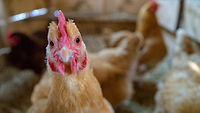Poultry, Swine Line Speed Studies Suggest Need for Best Practices to Protect Employee Health

Image credit: aleksandarlittlewolf via Freepik
The U.S. Department of Agriculture’s Food Safety and Inspection Service (USDA-FSIS) has completed swine and poultry line speed studies, finding that workers across all participating establishments experienced pain in their upper extremities. The poultry and swine line speed study reports provide insights for all facilities, regardless of line speed, on how they can protect employee health and wellbeing.
With the publication of the findings, FSIS is also extending the current swine and poultry line speed waivers for companies that participated in these studies through May 15, 2025. The relevant establishments are required to continue to submit food safety and worker safety data to FSIS.
In 2022, FSIS announced that it was contracting with a team of third-party worker safety experts to conduct a study to measure the impact of increased poultry line speeds on worker safety. Subsequently, the agency expanded the contract to include a study on increased swine line speeds. The studies were conducted to inform FSIS’ rulemaking regarding line speed waivers issued under the New Poultry Inspection System and New Swine Slaughter Inspection System.
For the studies, a team of third-party worker safety experts recorded and analyzed footage of poultry and swine plant workers, conducted interviews with workers, and measured muscle activity, posture, repetition among other activities. The study team compared the risk of upper extremity pain and musculoskeletal injury for workers at facilities when operating at higher speeds versus at lower speeds. The experts collected data in 11 poultry establishments participating under line speed waivers and evaluated other data submitted monthly from all participating establishments; and then, for swine, conducted a separate study in six facilities.
While line speeds were not determined to be the leading factor in worker musculoskeletal disorder risk at these plants, the reports offer insights into how line speeds and other factors may work together to contribute to employees’ overall risk. While there are differences in the poultry and swine studies, both found that workers across all participating establishments generally reported high levels of upper extremity pain.
The reports recommend steps establishments operating across line speed rates can take to reduce the risk of injury by mitigating the impact of the repetitive work, most notably by increasing staffing, which lowers the piece rate—a measure of work pace that accounts for job-specific line speed and staffing levels, per worker. Other strategies can include effective ergonomics plans, knife sharpening programs, and effective medical management. The reports suggest that meat and poultry companies develop an industrywide set of best practices, reflecting input from both workers and companies.
Looking for a reprint of this article?
From high-res PDFs to custom plaques, order your copy today!







